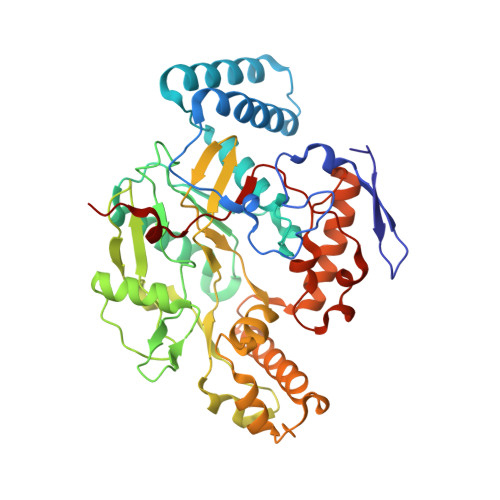Structural Basis for Isoform Selective Nitric Oxide Synthase Inhibition by Thiophene-2-carboximidamides.
Li, H., Evenson, R.J., Chreifi, G., Silverman, R.B., Poulos, T.L.(2018) Biochemistry 57: 6319-6325
- PubMed: 30335983
- DOI: https://doi.org/10.1021/acs.biochem.8b00895
- Primary Citation of Related Structures:
6CIC, 6CID, 6CIE, 6CIF - PubMed Abstract:
The overproduction of nitric oxide in the brain by neuronal nitric oxide synthase (nNOS) is associated with a number of neurodegenerative diseases. Although inhibiting nNOS is an important therapeutic goal, it is important not to inhibit endothelial NOS (eNOS) because of the critical role played by eNOS in maintaining vascular tone. While it has been possible to develop nNOS selective aminopyridine inhibitors, many of the most potent and selective inhibitors exhibit poor bioavailability properties. Our group and others have turned to more biocompatible thiophene-2-carboximidamide (T2C) inhibitors as potential nNOS selective inhibitors. We have used crystallography and computational methods to better understand how and why two commercially developed T2C inhibitors exhibit selectivity for human nNOS over human eNOS. As with many of the aminopyridine inhibitors, a critical active site Asp residue in nNOS versus Asn in eNOS is largely responsible for controlling selectivity. We also present thermodynamic integration results to better understand the change in p K a and thus the charge of inhibitors once bound to the active site. In addition, relative free energy calculations underscore the importance of enhanced electrostatic stabilization of inhibitors bound to the nNOS active site compared to eNOS.
Organizational Affiliation:
Departments of Molecular Biology and Biochemistry, Pharmaceutical Sciences, and Chemistry , University of California , Irvine , California 92697-3900 , United States.



















